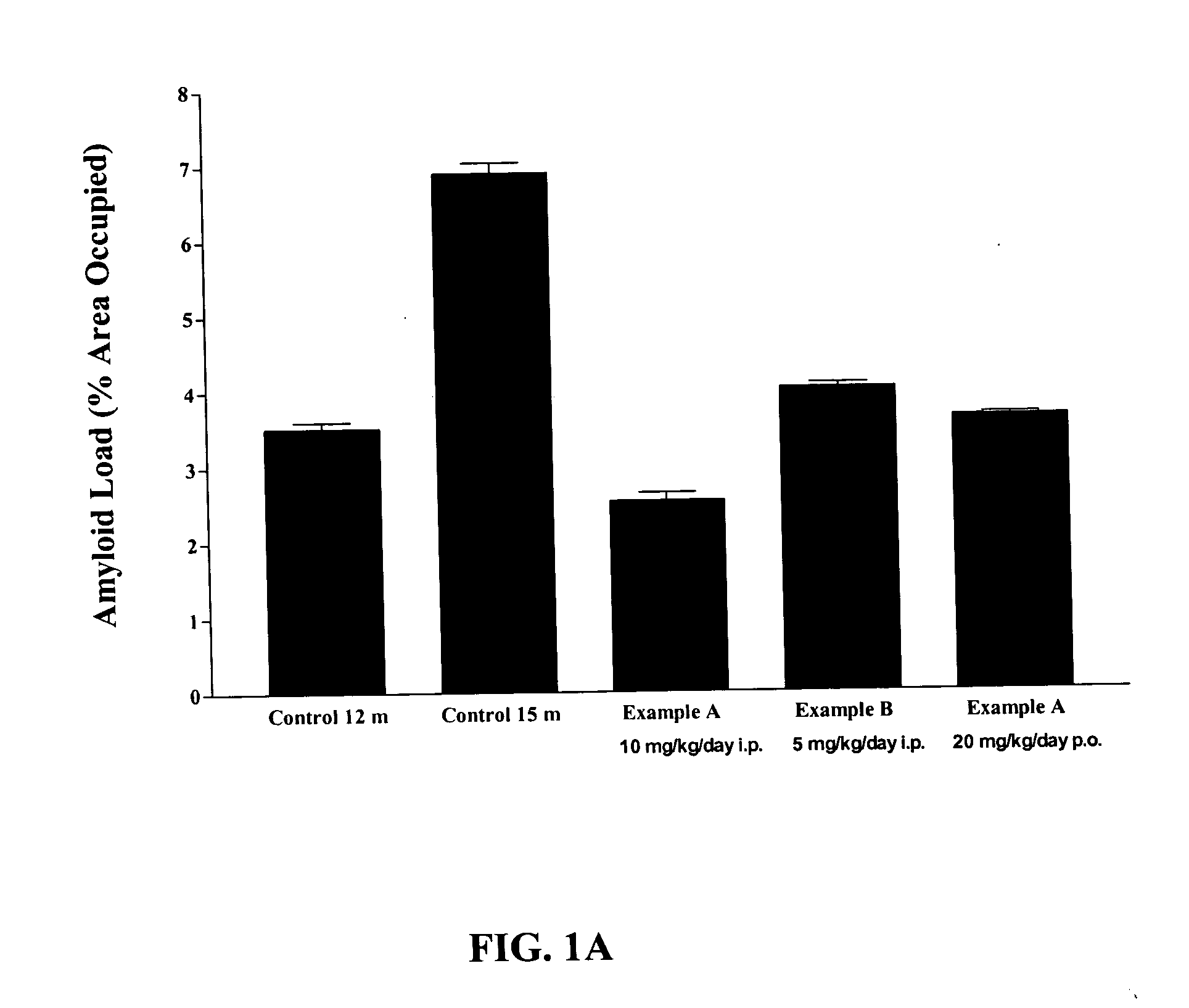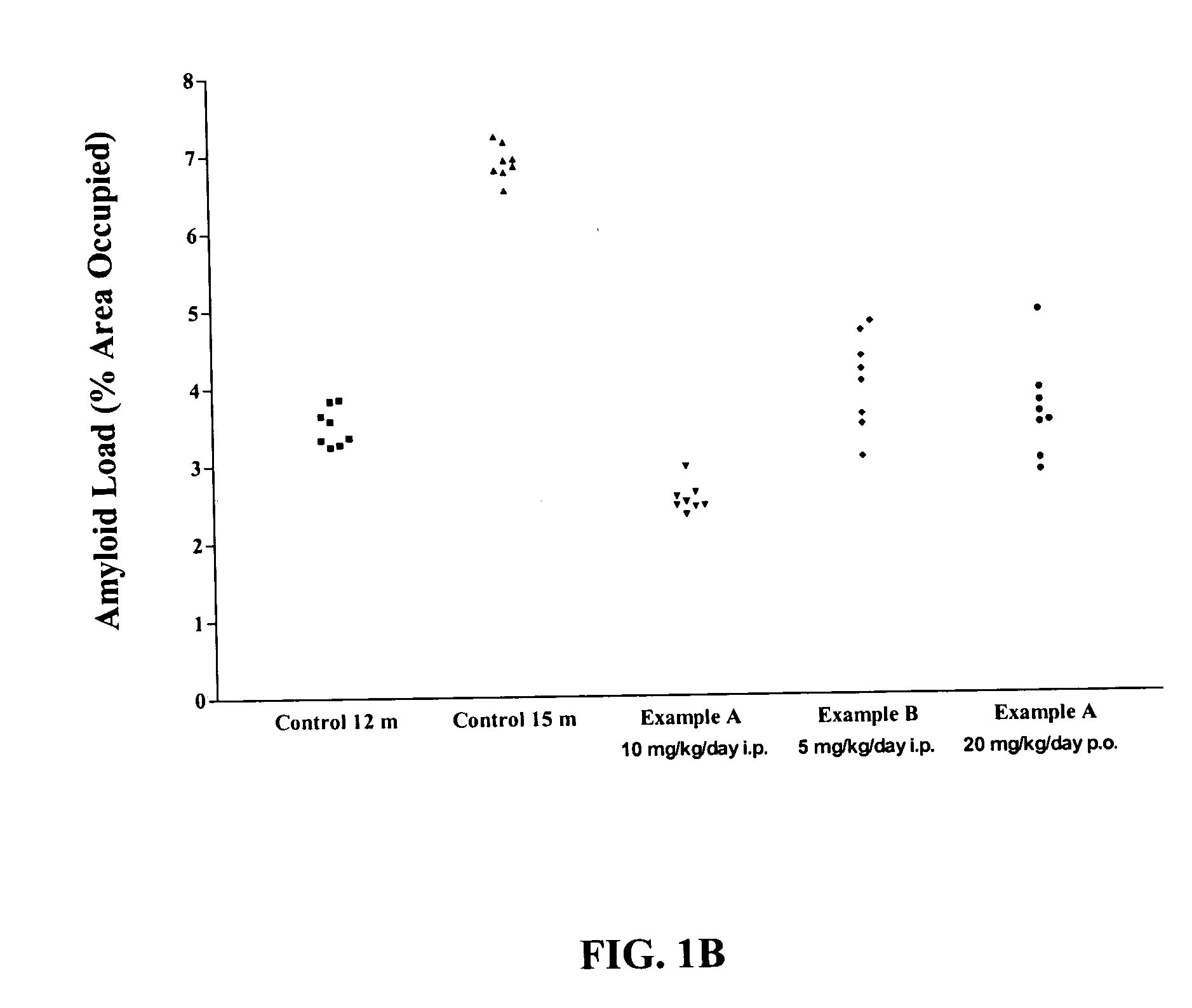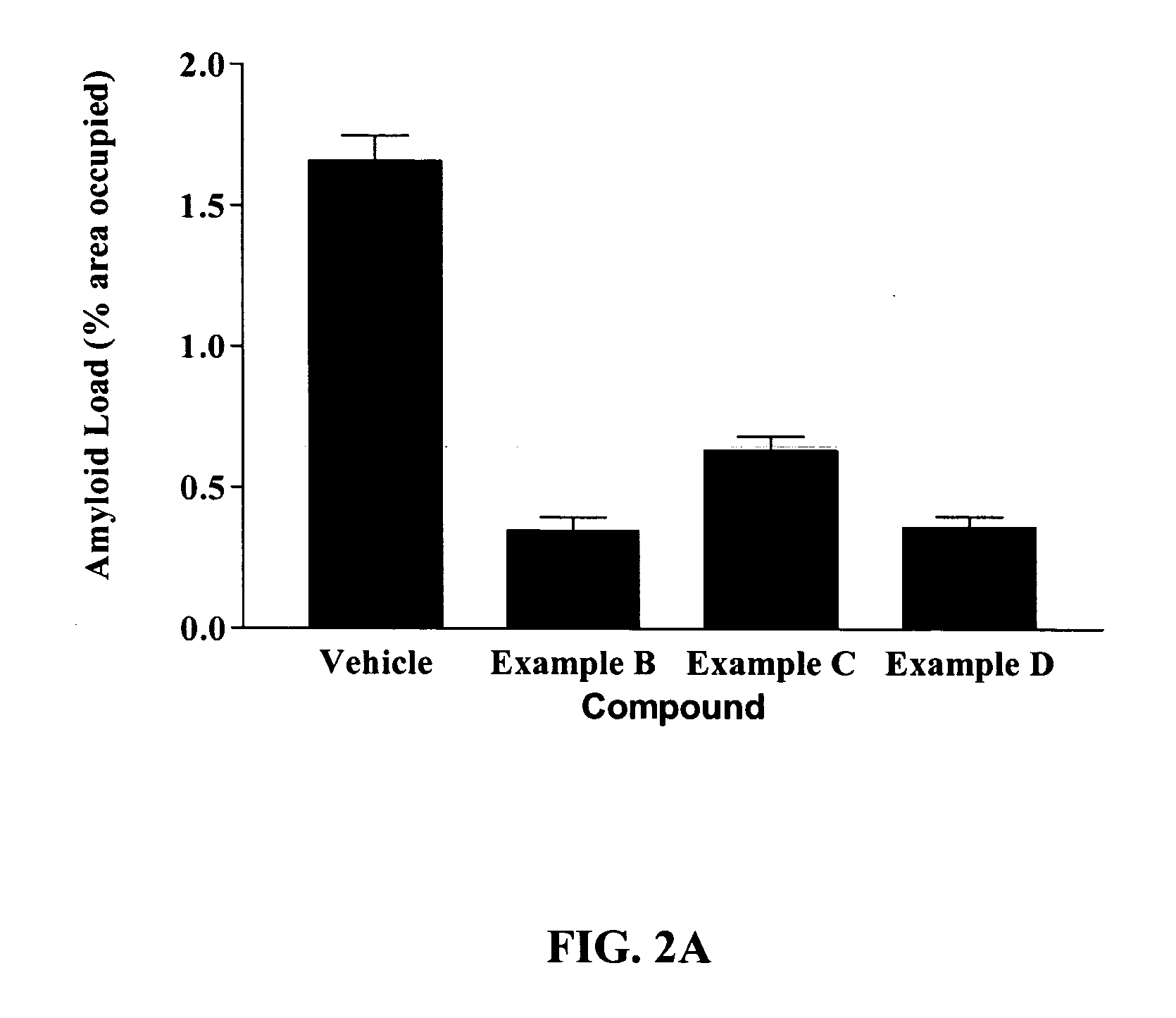Rage antagonists as agents to reverse amyloidosis and diseases associated therewith
a technology of amyloid plaques and antagonists, which is applied in the field of therapeutics, can solve the problems of does not provide a cure for the disease, and no treatment which is clinically effective in preventing or reversing symptoms, so as to reduce the formation of amyloid plaques and inhibit the onset and/or progression of amyloidosis
- Summary
- Abstract
- Description
- Claims
- Application Information
AI Technical Summary
Benefits of technology
Problems solved by technology
Method used
Image
Examples
example 1
Small Molecule RAGE Antagonists
RAGE antagonists of Formula (I) employed in Examples 2-6 are as follows.
ReferenceNameChemical StructureChemical NameExample A[3-(4-{2-butyl-1-[4-(4- chloro-phenoxy)-phenyl]- 1H-imidazol-4-yl}- phenoxy)-propyl]-diethyl- amineExample B{3-[3-butyl-2-[4-[2-(4- chloro-phenyl)-ethoxy]-2- (2-pyrrolidin-1-yl-ethoxy)- phenyl]-7-(2-pyrrolidin-1- yl-ethoxy)-3H- benzimidazol-5-yloxy]- propyl}-diethyl-amineExample C(3-{1-Butyl-6-(3- diethylamino-propoxy)-2- [4-(4-fluoro-3- trifluoromethyl-phenoxy)- 2-(2-pyrrolidin-1-yl- ethoxy)-phenyl]-1H- benzoimidazol-4-yloxy}- propyl)-diethyl-amineExample D{3-[1-Butyl-2-[4-(4-fluoro- 3-trifluoromethyl- phenoxy)-2-(2-pyrrolidin- 1-yl-ethoxy)-phenyl]-6-(2- pyrrolidin-1-yl-ethoxy)- 1H-benzoimidazol-4- yloxy]-propyl}-diethyl- amine
example 2
Methods and Materials
A. Study Design
For these experiments, the amyloid precursor protein (APP) transgenic model of mouse Aβ peptide amyloidosis was used. These animals begin to develop amyloid plaques at about 6 months age. APP transgenic mice were administered with vehicle or test compounds by intraperitoneal injection (i.p.) or orally (p.o.; per os), daily for 90 days. In studies of early AD, treatment started when the animals were 6 months old (25 g) (with plaques just beginning to form) and continued until the animals were 9 months old. In studies of established AD, treatment started at 12 months of age (35 g) and continued until the animals were 15 months old. At the end of the experiment, animals were sacrificed and examined for Aβ plaque burden in the brain (i.e., plaque volume).
B. In Vivo Methods
Male and female APP transgenic mice (Molecular Therapeutics, Inc.) of the appropriate age were given free access to food and water before and during the experiment. The anima...
example 3
Effect of RAGE Antagonists on Aβ Amyloidosis in Mice with Established AD
The amyloid load per mouse was determined from APP transgenic mice. Data from mice with Aβ amyloid that were administered vehicle, or RAGE antagonists Example A or Example B were examined.
In this mouse model, AD begins to develop by about 6-12 months. Intraperitoneal (i.p.) injection of Example A at a dose of 10 mg / kg per day, or of Example B at a dose of 5 mg / kg / day into 12 month old APP transgenic mice having established AD for 3 months (i.e., until 15 months) reduced plaque formation as compared to age-matched AD mice injected with saline (Table 2). FIG. 1 shows the reduction in plaque for AD mice injected with either Example A or Example B as compared to age-matched AD mice injected with saline (15 m control) (FIG. 1: compare month (m) control to Example A (i.p.) and Example B (i.p.)). Also, oral (p.o.) administration of Example A (20 mg / kg / day) starting at 12 months of age and continued for 3 months unt...
PUM
| Property | Measurement | Unit |
|---|---|---|
| Mass | aaaaa | aaaaa |
| Frequency | aaaaa | aaaaa |
| Frequency | aaaaa | aaaaa |
Abstract
Description
Claims
Application Information
 Login to View More
Login to View More - R&D
- Intellectual Property
- Life Sciences
- Materials
- Tech Scout
- Unparalleled Data Quality
- Higher Quality Content
- 60% Fewer Hallucinations
Browse by: Latest US Patents, China's latest patents, Technical Efficacy Thesaurus, Application Domain, Technology Topic, Popular Technical Reports.
© 2025 PatSnap. All rights reserved.Legal|Privacy policy|Modern Slavery Act Transparency Statement|Sitemap|About US| Contact US: help@patsnap.com



